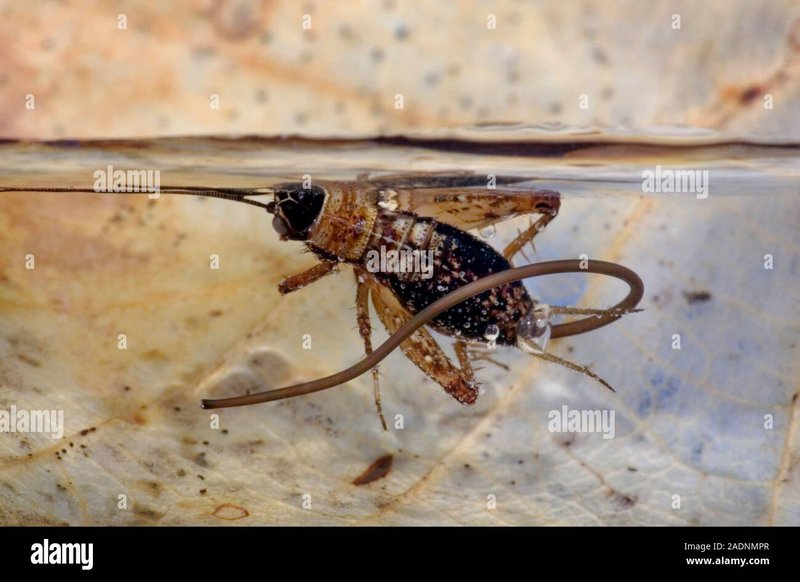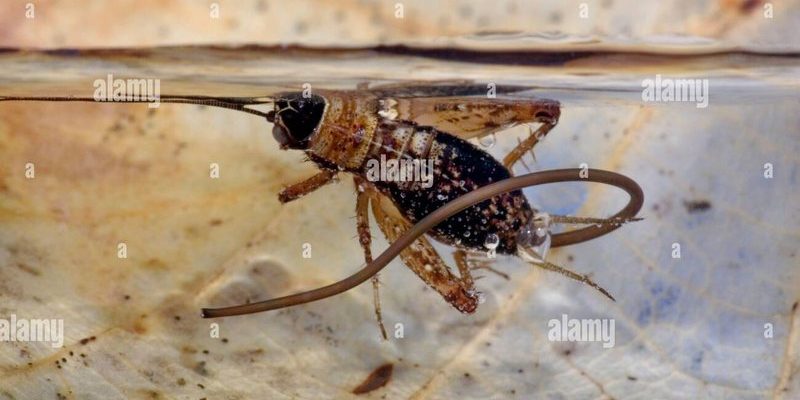
Their ecological importance is often overlooked, mostly because these creatures lead such mysterious lives. Just like the intricate threads of a spider’s web, hairworms weave connections in nature that help maintain balance and diversity. So, let’s dig deeper into why these seemingly bizarre worms are actually quite significant in their ecosystems.
Understanding Hairworms
Hairworms, belonging to the phylum Nematomorpha, are parasitic worms that primarily infect insects. They can range from a few centimeters to over a meter long, depending on the species. When a hairworm infects its host, it takes control of the host’s nervous system, compelling it to jump into water. The process is incredibly intricate and, frankly, a bit eerie.
You might be wondering how this all happens. Initially, the hairworm larvae enter the host through contaminated water or food. Once inside, they grow and develop, often living off the nutrients from their unwitting host. As they mature, the worms release chemicals that manipulate the host’s behavior, making the grasshopper or cricket crave water. This isn’t just a creepy coincidence; it’s vital for the hairworm’s life cycle.
The Role of Hairworms in the Ecosystem
Now that we have a grasp on what hairworms are, let’s talk about their ecological role. While it might seem like they only exist to make life miserable for insects, they’re actually contributing to a larger ecological balance. When hairworms manipulate their hosts to jump into water, they indirectly serve as a food source for other creatures, including birds and fish.
This cascading effect demonstrates the interconnectedness of ecosystems. By allowing their hosts to become a meal for other animals, hairworms help sustain a diverse food web. In this way, they play a crucial role in nutrient cycling, as nutrients from the host are transferred to the predators that consume them.
You’ll find that *everything* in an ecosystem relies on these kinds of interactions, and hairworms are part of that delicate balance. Without them, we could see a rise in insect populations, potentially leading to increased competition for resources.
Hairworms as Indicators of Ecosystem Health
Here’s the thing: hairworms can also act as indicators of ecosystem health. Their presence, or lack thereof, can tell us a lot about the environmental conditions surrounding them. For example, a thriving population of hairworms typically suggests that the aquatic ecosystems they rely on are healthy and stable.
Conversely, if you notice a decline in hairworm populations, it might indicate that something is off in the environment. This could be due to pollution, climate change, or habitat destruction. Researchers often study hairworm populations to gather data about the health of ecosystems and to identify potential threats before they become major issues.
Think of them as little environmental sentinels. Their life cycle and behavior provide crucial insights into the state of biodiversity, which is especially important as environmental challenges continue to grow.
The Relationship Between Hairworms and Their Hosts
While hairworms have a notorious reputation for controlling their hosts, the relationship is more complex than it appears. The interaction between hairworms and their insect hosts represents a fascinating example of parasitism. Here, *both* parties are impacted, though the hairworm benefits at the host’s expense.
When the hairworm manipulates its host to seek water, it also puts the host in danger. Once in the water, the host is vulnerable to predators or environmental hazards. This creates a unique tension in their relationship—while hairworms are enabling their survival, they are also leading their hosts to their doom.
In a way, this relationship reflects the harsh realities of nature. Predators and parasites alike are constantly vying for survival, and understanding these interactions can help us appreciate the complexities of life within ecosystems.
Hairworms and Biodiversity
You might think of biodiversity as a colorful garden filled with various flowers. Just like a garden thrives with diverse plants, ecosystems benefit immensely from a variety of species, including hairworms. By maintaining the balance of insect populations, hairworms contribute to greater biodiversity.
In ecosystems with healthy hairworm populations, you often find a broader range of insect species. This variety can lead to more complex food webs and stable environments. It’s like having a diverse set of players on a sports team—each one brings unique skills that contribute to the team’s success.
Moreover, the presence of hairworms can promote competition among insect species. By keeping host populations in check, hairworms can create a dynamic environment where only the fittest insects survive. This natural filtering process ensures that ecosystems remain resilient, adapting to changes in the environment over time.
Conservation and Hairworms
As we consider the ecological importance of hairworms, it’s essential to think about conservation efforts. Many ecosystems are threatened by human activities, including pollution and habitat destruction, which can directly impact hairworm populations.
Protecting habitats and reducing pollution levels can help maintain the delicate balance required for hairworms to thrive. By doing so, we support their role in ecosystem health and biodiversity. Think about it: we might not always see hairworms, but their effects ripple throughout the environment.
That’s why engaging in conservation practices—like supporting clean water initiatives and habitat restoration—can have a profound impact on myriad species, including hairworms. When we take steps to protect the environment, we’re also safeguarding the unseen threads that tie all life together.
The ecological importance of hairworm species might not be immediately obvious, but they play a crucial role in maintaining balance and health within ecosystems. From serving as indicators of environmental health to contributing to biodiversity, these intriguing creatures deserve our attention.
So, next time you think about the life cycles in nature, remember that even the strangest beings, like hairworms, have something valuable to teach us. Embracing these often-overlooked species enriches our understanding of the world around us, reminding us of the delicate connections that sustain life on our planet. Let’s appreciate the beauty in the unexpected, and recognize that every creature, no matter how small or strange, plays a part in the grand tapestry of nature.

